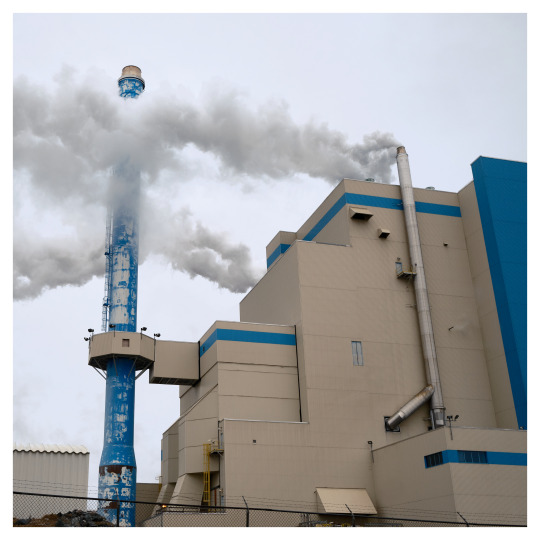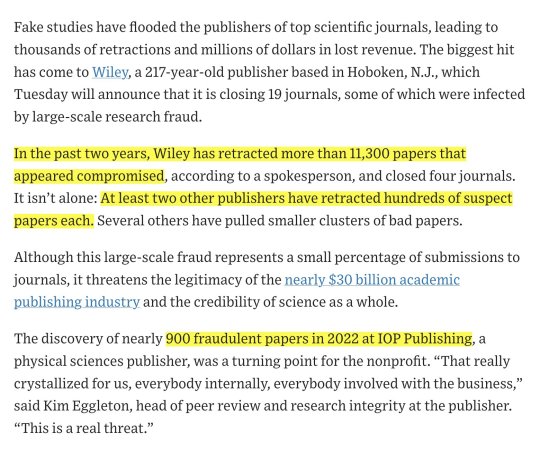#Paper Mill
Text

moulin à papier, chemin des étangs, lebel-sur-quévillon
409 notes
·
View notes
Text
Is no one stalking Paper Mill's The Great Gatsby as much as I am right now??
#i Need a cast recording or a bootleg or ANYTHING PLEASE#the great gatsby#paper mill#paper mill playhouse#the great gatsby musical#jeremy jordan#eva noblezada
82 notes
·
View notes
Text


Tacoma, Washington. (May 2021)
#tacoma#washington#washington state#pnw#pacific northwest#2021#my photo#tacoma dome#paper mill#port of tacoma#trains
21 notes
·
View notes
Text

I'd add this to the prior post, but it was getting awfully long. I surprised myself by getting another painting session in today. I have never painted from a drone photograph before, and the high angle is interesting. I'm reasonably happy that the road looks wet and the desaturated colors in the background are working well with the intense shades in the foreground
#drone photography#oil painting#urbex#abandoned buildings#industrial#appalachia#paper mill#westvaco#paintblr#artblr#artists on tumblr
11 notes
·
View notes
Text

Ruines d'une usine de papier, Chicoutimi, Québec, 2023.
14 notes
·
View notes
Text


By: Nidhi Subbaraman
Published: May 14, 2024
Wiley will announce that it will shutter 19 more journals, some tainted by fraud.
Fake studies have flooded the publishers of top scientific journals leading to thousands of retractions and millions of dollars in lost revenue. The biggest hit has come to Wiley, a 217-year-old publisher based in Hoboken, N.J., which Tuesday will announce that it is closing 19 journals, some of which were infected by large-scale research fraud.
In the past two years, Wiley has retracted more than 11,300 papers that appeared compromised, according to a spokesperson, and closed four journals. It isn’t alone: At least two other publishers have retracted hundreds of suspect papers each. Several others have pulled smaller clusters of bad papers.
Although this large-scale fraud represents a small percentage of submissions to journals, it threatens the legitimacy of the nearly $30 billion academic publishing industry and the credibility of science as a whole.
The discovery of nearly 900 fraudulent papers in 2022 at IOP Publishing, a physical sciences publisher, was a turning point for the nonprofit. “That really crystallized for us, everybody internally, everybody involved with the business," said Kim Eggleton, head of peer review and research integrity at the publisher. “This is a real threat."
The sources of the fake science are “paper mills"—businesses or individuals that, for a price, will list a scientist as an author of a wholly or partially fabricated paper. The mill then submits the work, generally avoiding the most prestigious journals in favor of publications such as one-off special editions that might not undergo as thorough a review and where they have a better chance of getting bogus work published.
World-over, scientists are under pressure to publish in peer-reviewed journals—sometimes to win grants, other times as conditions for promotions. Researchers say this motivates people to cheat the system. Many journals charge a fee to authors to publish in them.
Problematic papers typically appear in batches of up to hundreds or even thousands within a publisher or journal. A signature move is to submit the same paper to multiple journals at once to maximize the chance of getting in, according to an industry trade group now monitoring the problem. Publishers say some fraudsters have even posed as academics to secure spots as guest editors for special issues and organizers of conferences, and then control the papers that are published there.
“The paper mill will find the weakest link and then exploit it mercilessly until someone notices," said Nick Wise, an engineer who has documented paper-mill advertisements on social media and posts examples regularly on X under the handle @author_for_sale.
The journal Science flagged the practice of buying authorship in 2013. The website Retraction Watch and independent researchers have since tracked paper mills through their advertisements and websites. Researchers say they have found them in multiple countries including Russia, Iran, Latvia, China and India. The mills solicit clients on social channels such as Telegram or Facebook, where they advertise the titles of studies they intend to submit, their fee and sometimes the journal they aim to infiltrate. Wise said he has seen costs ranging from as little as $50 to as much as $8,500.
When publishers become alert to the work, mills change their tactics.
“It’s like a virus mutating," said Dorothy Bishop, a psychologist at the University of Oxford, one of a multitude of researchers who track fraudulent science and has spotted suspected milled papers.
For Wiley, which publishes more than 2,000 journals, the problem came to light two years ago, shortly after it paid nearly $300 million for Hindawi, a company founded in Egypt in 1997 that included about 250 journals. In 2022, a little more than a year after the purchase, scientists online noticed peculiarities in dozens of studies from journals in the Hindawi family.
Scientific papers typically include citations that acknowledge work that informed the research, but the suspect papers included lists of irrelevant references. Multiple papers included technical-sounding passages inserted midway through, what Bishop called an “AI gobbledygook sandwich." Nearly identical contact emails in one cluster of studies were all registered to a university in China where few if any of the authors were based. It appeared that all came from the same source.
“The problem was much worse and much larger than anyone had realized," said David Bimler, a retired psychology researcher in Wellington, New Zealand, who started a spreadsheet of suspect Hindawi studies, which grew to thousands of entries.
Within weeks, Wiley said its Hindawi portfolio had been deeply hit.
Over the next year, in 2023, 19 Hindawi journals were delisted from a key database, Web of Science, that researchers use to find and cite papers relevant to their work, eroding the standing of the journals, whose influence is measured by how frequently its papers are cited by others. (One was later relisted.)
Wiley said it would shut down four that had been “heavily compromised by paper mills," and for months it paused publishing Hindawi special issues entirely as hundreds of papers were retracted. In December, Wiley interim President and Chief Executive Matthew Kissner warned investors of a $35 million to $40 million revenue drop for the 2024 fiscal year because of the problems with Hindawi.
According to Wiley, Tuesday’s closures are due to multiple factors, including a rebranding of the Hindawi journals and low submission rates to some titles. A company spokesperson acknowledged that some were affected by paper mills but declined to say how many. Eleven were among those that lost accreditation this past year on Web of Science.
“I don’t think that journal closures happen routinely," said Jodi Schneider, who studies scientific literature and publishing at the University of Illinois Urbana-Champaign.
The extent of the paper mill problem has been exposed by members of the scientific community who on their own have collected patterns in faked papers to recognize this fraud at scale and developed tools to help surface the work.
One of those tools, the “Problematic Paper Screener," run by Guillaume Cabanac, a computer-science researcher who studies scholarly publishing at the Université Toulouse III-Paul Sabatier in France, scans the breadth of the published literature, some 130 million papers, looking for a range of red flags including “tortured phrases."
Cabanac and his colleagues realized that researchers who wanted to avoid plagiarism detectors had swapped out key scientific terms for synonyms from automatic text generators, leading to comically misfit phrases. “Breast cancer" became “bosom peril"; “fluid dynamics" became “gooey stream"; “artificial intelligence" became “counterfeit consciousness." The tool is publicly available.
Another data scientist, Adam Day, built “The Papermill Alarm," a tool that uses large language models to spot signs of trouble in an article’s metadata, such as multiple suspect papers citing each other or using similar templates and simply altering minor experimental details. Publishers can pay to use the tool.
With the scale of the paper-mill problem coming into ever better focus, it has forced publishers to adjust their operations.
IOP Publishing has expanded teams doing systematic checks on papers and invested in software to document and record peer review steps beyond their journals.
Wiley has expanded its team working to spot bad papers and announced its version of a paper-mill detector that scans for patterns such as tortured phrases. “It’s a top three issue for us today," said Jay Flynn, executive vice president and general manager of research and learning, at Wiley.
Both Wiley and Springer Nature have beefed up their screening protocols for editors of special issues after seeing paper millers impersonate legitimate researchers to win such spots.
Springer Nature has rejected more than 8,000 papers from a suspected paper mill and is continuing to monitor its work, according to Chris Graf, the publisher’s research-integrity director.
The incursion of paper mills has also forced competing publishers to collaborate. A tool launched through STM, the trade group of publishers, now checks whether new submissions were submitted to multiple journals at once, according to Joris van Rossum, product director who leads the “STM Integrity Hub," launched in part to beat back paper mills. Last fall, STM added Day’s “The Papermill Alarm" to its suite of tools.
While publishers are fighting back with technology, paper mills are using the same kind of tools to stay ahead.
“Generative AI has just handed them a winning lottery ticket," Eggleton of IOP Publishing said. “They can do it really cheap, at scale, and the detection methods are not where we need them to be. I can only see that challenge increasing."
[ Via: mirror (turn off Javascript) ]
#Colin Wright#Nidhi Subbaraman#academic fraud#academic corruption#paper mill#Wiley#Springer Nature#fraud#religion is a mental illness
5 notes
·
View notes
Video
Uptown by Marco Orazi
Via Flickr:
Dust and Silence | Facebook | Tumblr
#abandoned#abandon#abbandonato#abbandono#abandonment#abandoned place#decay#dustandsilence#derelict#decayed#decadenza#decadente#derelict places#decadenza urbana#industrial#industrial decay#industriale#industry#industria#paper mill#flickr
13 notes
·
View notes
Photo


December 2022 Patreon Post
Each month I post at least one article on my Patreon showing off the work process on a new piece. So if you want to see what’s in between those two images, it’s only 2$ !
Sometime I also post comics and paper toys. I have already have 96 posts there, so it’s pretty good bangs for your bucks imho.
https://www.patreon.com/posts/paper-mill-75571825
14 notes
·
View notes
Photo

Green Bay Packaging's new $500 million dollar recycled paper mill opened in 2021. As seen from across the Fox River.
2 notes
·
View notes
Text
10/15/22
I love where I live


6 notes
·
View notes
Text

boulevard des capucins, québec
115 notes
·
View notes
Text
Leizhan’s pulp equipment low density cleaner greatly promotes the production of fiber pulp and efficiently removes light and heavy impurities in the pulp.
My Whatsapp: +86 13937367190
Email: [email protected]
Contact us welcome!
0 notes
Text


Tacoma, Washington. (May 2021)
#tacoma#washington#washington state#pnw#pacific northwest#2021#my photo#foss waterway#puget sound#port of tacoma#ship#paper mill#industrial#grain elevator#shipping#industry
19 notes
·
View notes
Text

Thinking about attempting to paint this drone photo after I finish my current project. It would be quite a challenge, but . . so tempting. This paper mill ran for over a hundred years. While it, like any other industrial site, could and should have done better to keep the environment clean, it did have a special place in our county's history. It is in the midst of demo, now, and a huge loss to the folks who depended on it for a living.
photo credit www.instagram.com/the_lucky_alexander/
#industrial#history#manufacturer#paper mill#luke mill#westvaco#appalachia#original photography#fall colors
8 notes
·
View notes
Text

Just a day casually installing steam trap monitors
0 notes

